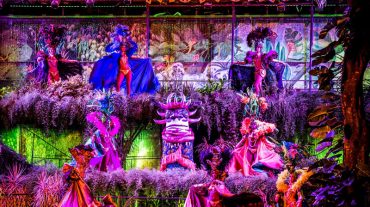Sloppy Joe's, one of the legendary bars of Havana in the twentieth century for its bohemian, long bar and clients like Hemingway and Spencer Tracy, reopened after nearly half a century in ruins, thanks to a laborious reconstruction that seeks to return to the city An important part of his "memory".
Opened in 1917 by a Spanish merchant, the bar was for decades a place of reference for North American tourists and a symbol of the "movida" habanera, but unlike other local celebrities like "Floridita" or "La Bodeguita del Medio" , Definitively closed its doors in 1965 and the time destroyed it.
"Take a picture at Sloppy Joe's, your best memory of Havana," he reads now in some interior columns of the restored local, along with old photographs that pay homage to his glory years but also serve as a credential to the business.
Its spectacular 18-meter-long black mahogany bar, the longest that ever existed in Cuba, became one of the main problems for restaurateurs.
According to anecdotes reproduced inside the bar itself, the original piece was cut in three parts, one of them recovered "of miracle" and from there the carpenters of the Office built a similar bar, also of mahogany, with space for 25 stools.
Other details that were taken care of were the typical showcases and shelves exhibited by dozens of liqueurs from all over the world, as well as the elaboration of the wide menu of entrepanes, cocktails and "distilled" that the site boasted.
At the counter, now adorned with hanging Cuban flags, they once sat celebrities such as writer Ernest Hemingway or actors Spencer Tracy, Clark Gable, Errol Flynn and Cantinflas.
"There is something in her atmosphere that I think people should like," Barbra Bachman, who admits being somewhat "obsessed" with the Sloppy story, told Efe.
Bachman said he has collected bits of bar history by buying old photos and postcards in Cuban markets, and even owns an image of actress Ginger Rogers there.
Located very close to the Paseo del Prado, the National Museum of Fine Arts and Central Park, Sloppy Joe's initial space was a still life that the Galician José Abeal bought with his savings and later turned into a bar.
The name of the business ("sloppy" means sloppy in English) may have been suggested by Hemingway himself, according to some anecdotes, but in any case Abeal had spent years working in New Orleans and Miami before establishing his business in Cuba and knew language.
The proclamation of the Dry Law in the United States determined the boom of the bar, as Cuba became the center of the exodus of North American merchants dedicated to the traffic of alcoholic beverages in the decade of the 20th century.
Some slogans of the time called the "Sloppy" as the "crossroads of the world" and the "center of attraction of the Havana elite and tourism," in particular the American.
Ernesto Iznaga, manager in charge of the bar, which now manages the Cuban tourist company Habaguanex, told Efe that the place will be oriented "to all tourism" but there may be "many Americans".
Ernesto Casas, a 44-year-old Cuban who has lived in New York for almost two decades, recalled that the bar appeared in Graham Greene's novel "Our Man in Havana" and his film adaptation, filmed in 1959 on the island and Starring British Alec Guinness.
"One of the first things I want to do in this bar is to go to his bathroom, because in the movie there is a great scene where Guinnes goes there and a gentleman, chases him with guitars and does not let him urinate," Casas .









